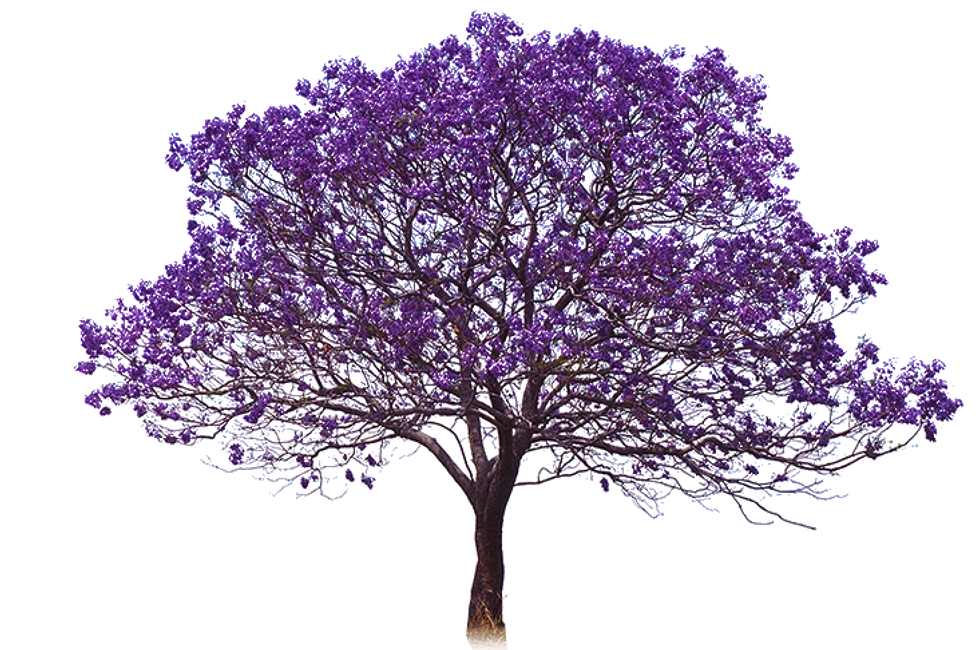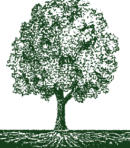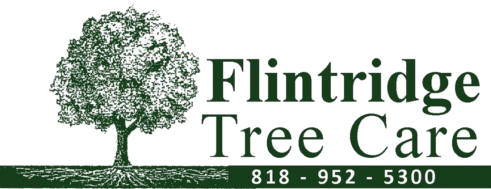Flintridge Tree Care Training
Philosophy of pruning trees
A properly pruned tree looks as natural as possible; the tree’s appearance reflects its fundamental form and character. The pruner must maintain this structural integrity and know a little tree biology and proper pruning principles.
Recommended pruning equipment
- Hand pruners (Felco or ARS type, bypass, not anvil type)
- long-handled loppers, 18-inch (Corona type, bypass, not anvil type)
- hand-saw, 12–16 inches
- bottle of rubbing alcohol or 10:1 diluted bleach
- whetting stone/sharpener
- oil
- file
- safe ladder (3-legged are best for uneven ground)
- pole pruner, 10-foot (optional)
- chain saw (optional)
Tree Trimming Priorities
- Maintain the health of the tree
- remove all dead, dying, and diseased limbs
- remove crossovers, which can rub together and damage limbs and harbor disease
- remove hazardous branches before they fall
- correct and repair damage.
- Raise the canopy to increase pedestrian, vehicular or visual zone.
- Rejuvenate the tree by the removal of old wood in such a way that encourages the formation of new wood (remove no more than 1/3 of the wood in one year).
- Improve the aesthetic quality of the tree and, thus, its value.
- Slow the tree’s growth by timely removal of foliage (but best to select the right plant for the site).
- Fruit trees:
- increase fruit production
- develop strong 45-degree angles to support the fruit load
- remove limbs that grow down or straight up
- maintain tree size (5 to 10 feet is ideal size for a home orchard in terms of accessibility)
- maintain fruit spurs.
When to prune trees
The best time to prune trees is during the dormant period, usually in late winter from November to March.
The best time to prune trees is during the dormant period, usually in late winter from November to March. Dead or diseased branches should be removed as soon as possible. Pruning done during the dormant season tends to have an invigorating effect on tree growth. Pruning done during peak growth times tends to slow growth by removing leaves that manufacture nourishment. However, too much summer pruning can damage a tree. Pruning during the spring (post-dormancy) and fall (pre-dormancy) is generally the least desirable time as the plant is most vulnerable during those times.
Berries and tree fruits are pruned November until bloom; prune blooming ornamentals during and immediately after bloom.
When you cut away part of a plant, a wound is left, susceptible to pests and diseases. To avoid trouble, always prune so as to make small wounds, rather than large ones. Removing a bud or twig produces a smaller wound than waiting until it is a large limb! Rubbing off a sucker bud leaves a smaller wound than if you wait until it has a year’s growth or more.
Pruning cuts
Heading vs. thinning cuts
A tree’s response to a pruning cut depends on where on the branch the cut is made. Both types of cuts are used in pruning fruit trees and grapes.
- Heading cuts: Several buds left on the cut branch grow, making denser, more compact foliage on more branches. (Figure 1)
- Thinning cuts: Branches are removed entirely, leaving no buds to grow. Their energy is diverted into remaining branches, which grow more vigorously. (Figure 2)
Angle and placement of cuts
Always make cuts close to a node. Branches grow only at these nodes, and if you leave too long a stub beyond the node, the stub will die and rot. (Figure 3)
Prune to the lateral bud that will produce the branch you want. The placement of that bud on the stem points the direction of the new branch. An outside bud, pruned with a slanting cut just above the bud, will usually produce an outside branch. A flat cut above the bud allows two lower buds to release and grow shots.
Pruning thick, heavy branches
- Undercut the bottom of the branch about a third of the way through, 6–12 inches out from the trunk. (Figure 4, a)
- Make a second cut from the top, about 2-inches farther out from the under-cut, until the branch falls away. (Figure 4, b)
- Cut back the resulting stub to the branch collar, not flush with the trunk. (Figure 4, c)
Anatomy of a fruit tree
- Crotch: The angle where branches fork, or where a main limb joins the trunk. Strong crotches are wide-angled, 45 degrees; weak crotches are narrow.
- Scaffold: The main limbs branching from the trunk.
- Watersprout: A very vigorous shoot from a dormant bud on a branch. Remove by cutting.
- Sucker: A vigorous shoot from the roots or from below the bud union. Cut off at the base. (To remove, dig out soil around sucker, clip the sucker off and leave cut exposed to air.)
Parts of the branch
- Terminal bud: The fat bud at a branch tip will always grow first and fastest if you leave it. Cut it, and several buds will grow behind it.
- Leaf bud: Flattish triangle on the side of a branch. To make one grow, cut just above it. Choose buds pointing outward from the trunk so the growing branch will have space and light.
- Flower bud: Plump compared to leaf buds and first to swell in spring. On stone fruits they grow alone or beside leaf buds. On apples and pears they grow with a few leaves.
- Spur: A short twig on apples, pears, plums, and apricots that grow on older branches, produce fat flower buds, then fruit. Don’t remove them.
- Bud scar: A ring on a branch that marks the point where the terminal bud began growing after the dormant season. The line marks the origin of this year’s growth.
Types of tree forms
- Central leader: one dominant trunk all the way to the top; strong, good light penetration; difficult to reach higher branches with large trees
- Modified central leader: central leader trunk to 6 to 10 feet, then multiple leader; combines strength of central trunk with sun-filled center of a vase shape
- Vase shape or multiple leaders: vase shape with many branches; the short trunk of about 3 feet with three or four main limbs, each of which has fully filled-out secondary branches, creating an open center allowing light to reach all branches
- Others: include espalier and trellis
Training for a vase shape
- First dormant season: After the tree has grown through the spring, summer, and fall and into its first winter dormancy, choose three or four branches with wide (45-degree) crotches, looking for branches that radiate evenly around the trunk. Try to have at least 6 inches vertical distance between branches, with the lowest branch about 15–18 inches above the ground. Cut off the vertical stem just above the top one. (If there are fewer than three good branches, head cut the vertical stem and choose the remaining scaffold branches during the next dormant season.)
- Second dormant season: If necessary, choose the remaining scaffold branches and cut off the vertical stem just above the highest selected scaffold branch. Remove the weakest side branches from the scaffold branches chosen last season, leaving the main stem and laterals on each branch.
- Third dormant season: Now is the time to thin surplus shoots and branches. Select the strongest and best-placed terminal shoot near the tip of each scaffold branch, as well as four to six other side shoots on each scaffold (branch). Leave the short weak shoots that grow straight from the trunk, to shade it and help produce food for the tree.
Frequently asked questions
Should I remove my big old apple tree?
Keep it if it has sentimental value, produces good fruit, shades the house, houses a swing or treehouse for the kids. Otherwise, remove it and replace it with several dwarf or semi-dwarf fruit trees. The ideal tree for the home orchard is 5–10 feet; at that height, you are best able to prune, spray, thin and harvest.
(See also EC 1005, Pruning to Restore an Old Apple Tree)
Is it okay to prune suckers and watersprouts? When and how do I do it?
Such overly vigorous growth can be controlled by early summer pruning, which discourages them from regrowing; cut them off at the base. Better yet, rub them off with your thumb in May or June. Watersprouts will emerge following an overzealous dormant season pruning job; sometimes it’s best to leave one or two of these, particularly as a replacement for the leader if it was cut, to discourage regrowth of the others.
Do I need to paint the wounds with a sealing compound?
No, this is no longer recommended. The tree or plant is best protected by proper pruning technique and timing. Sealing compounds encourage wood rot.
How can I slow the growth of a tree?
It is always best to select the right tree for the site, rather than try to work against nature. However, these techniques will help to retard the growth of a tree:
- Reduce dormant pruning and prune more in June or July. (Winter pruning invigorates a tree; summer pruning decreases vigor and size.)
- Give no or less nitrogen. Give less water.
- Hand pull the water suckers in May or June, when they are 2–4 inches long and flexible; this makes it less likely they will regrow. (Pruning suckers in the winter ensures they will regrow in the spring.) Leave a sucker on top of the tree to dominate, called apical dominance.
Should I prune a fruit tree when I plant it?
In digging up a young tree from the nursery, some of the root system can be damaged; top pruning is usually required to prevent tree stress due to the lack of balance between the root system and the top. However, excessive pruning of young trees may delay blossoming and fruiting.
For a single whip, prune tree to waist height at planting. Branching will begin at this pruning cut.
DECIDUOUS TREE TRIMMING
Most deciduous trees should be pruned during their dormant period after leaves have fallen, which is usually October, November, December or January. Such trees include:
* Ash (Fraxinus species)
* Birch (Betula species)
* Cape chestnut (Calodendrum capense)
* Chinese elm (Ulmus parvifolia)
* Chinese pistache (Pistacia chinensis)
* Fruitless mulberry (Morus alba)
* Ginkgo (Ginkgo biloba)
* Italian alder (Alnus cordata)
* Maple
* Sweet gum (Liquidambar styraciflua)
For Expert Tree Trimming click the “Find out More” button!Find out more

FLOWERING TREE TRIMMING
Prune flowering trees when they are dormant, if they are deciduous, or immediately after flowering is completed, if they are evergreen. For those trees that bloom when they are leafless, in most cases.
* Acacias (various species)
* Bradford pear (Pyrus calleryana, several cultivars), which blooms while leafless
* Camellia Japonica
* Cape chestnut (Calodendrum capense)
* Cassia
* Chinese flame tree (Koelreuteria bipinnata)
* Coral trees (Erythrina caffra and other species), which bloom while leafless
* Crape myrtle
* Empress tree (Paulownia tomentosa), which blooms while leafless
* Firewheel trees (Stenocarpus sinuatus)
* Jacaranda
* Lemon bottlebrush (Callistemon citrinus)
* New Zealand Christmas tree
* Purple orchid tree (Bauhinia variegata)
* Saucer magnolia (Magnolia soulangiana), which blooms while leafless
* Silk tree/mimosa ( Albizia julibrissin)
* Southern magnolia (Magnolia grandiflora)
* Tipu tree (Tipuana tipu)
For Expert Tree Trimming click the “Find out More” button! Find out more
FALL & WINTER TREE TRIMMING GUIDE

BROAD-LEAF EVERGREENS TREE TRIMMING
Broadleaf evergreens should be pruned
October, through March or May or June.
Such trees include:
* Bronze loquat (Eriobotrya deflexa)
* Camphor tree (Cinnamomum camphora)
* Carrot wood (Cupaniopsis anacardioides)
* Eucalyptus species
* Kaffir plum (Harpephyllum caffrum)
* Olive (Olea europaea)
* Ornamental figs (ficus species)
* Peppermint tree (Agonis flexuosa)
* Pittosporum species, such as Victorian box (Pittosporum undulatum)
* Toyon (Heteromeles arbutifolia)
For Expert Tree Trimming click the “Find out More” button! Find out more

